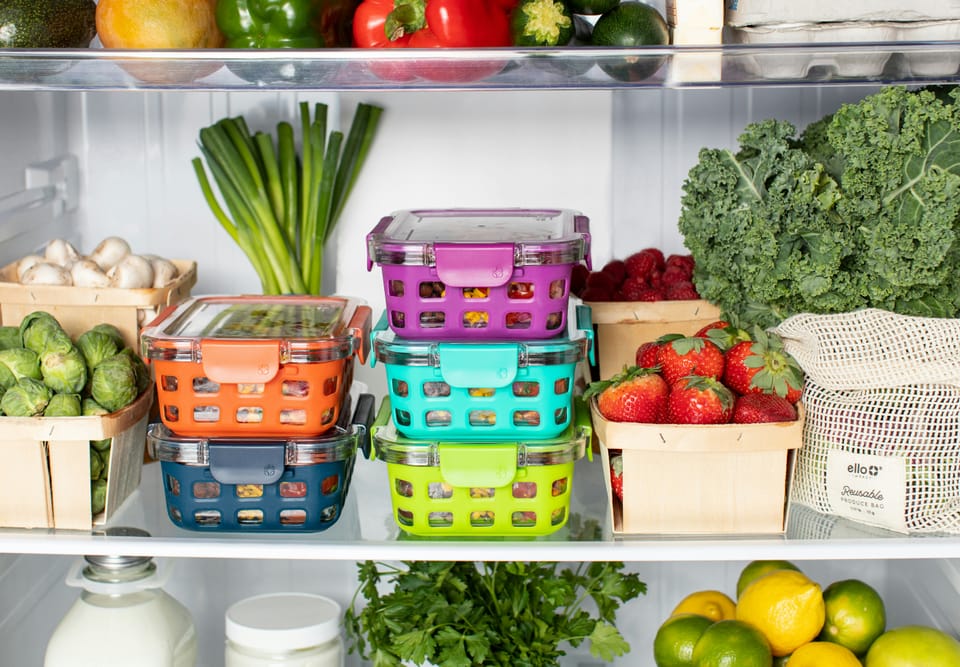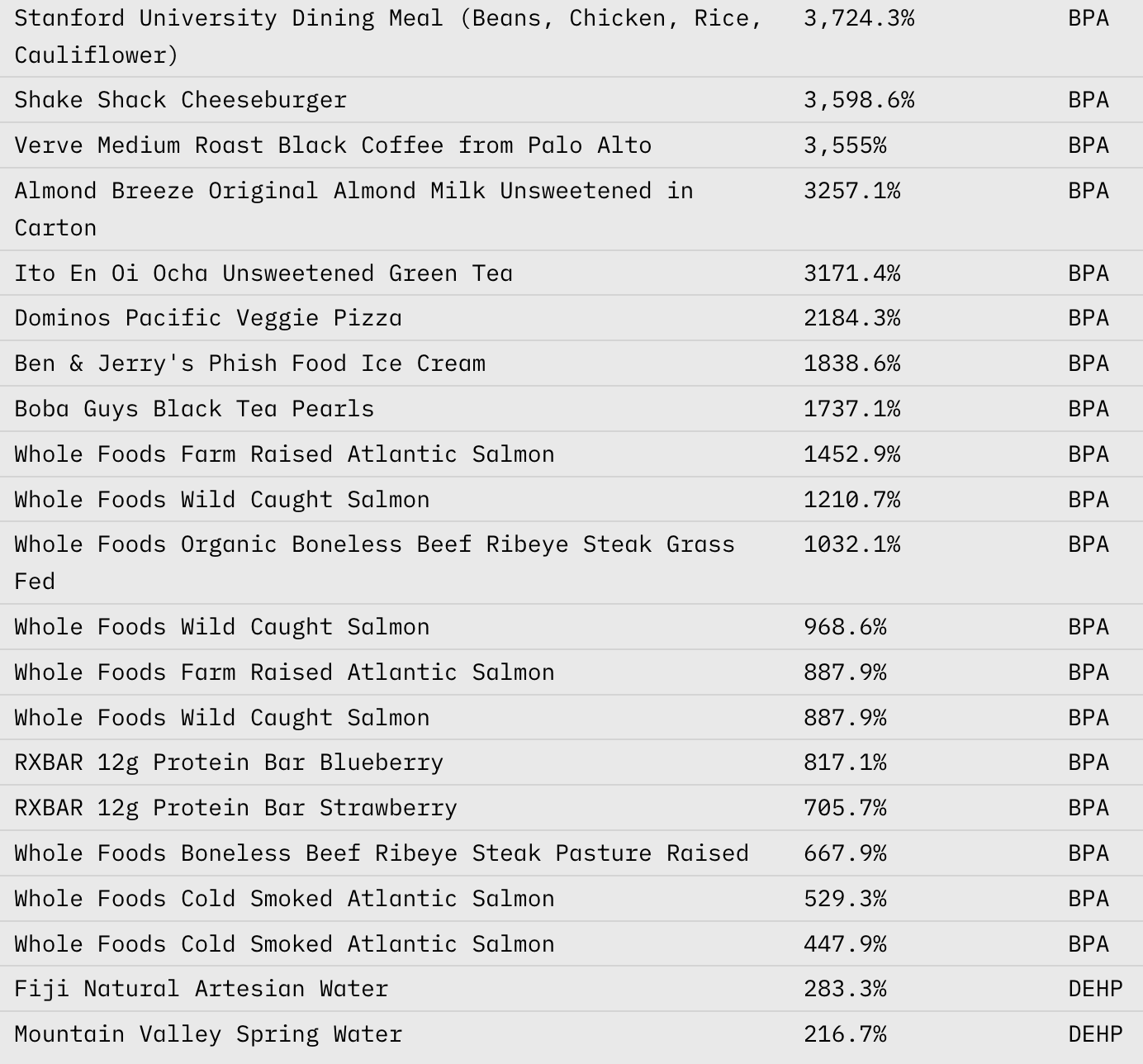The 'Healthy' Foods Hiding Plastic Chemicals and Endocrine Disruptors

Just last month (December, 2024) plastic chemicals were found in 86% of the foods tested in a study released last month by Plasticlist. Even big-name brands like Starbucks, Gerber, Chobani, Celsius, and Coca-Cola had traces of plastic in every product tested. Every baby food, prenatal supplement, breast milk, yogurt, and ice cream product that was tested contained at least one of the plastic chemicals they tested for.
It’s pretty shocking when you think about what we might be eating without even realizing it. Even when you think you’re eating “healthy” you may be consuming small chemicals that have downstream impacts on our health but there are ways to mitigate the risks.
We know that the effects are not likely to be good, but very specifically we do not know just how bad, which is reason for concern.
Plastic Chemicals: Which ones should you care about?
There are a few different types of plastics you may have heard of, such as microplastics and nanoplastics. This article will focus on Endocrine-Disrupting Chemicals (EDCs), as there is more evidence regarding the harmful effects of these chemicals on the body.
- Microplastics are pieces of plastic less than 5 millimeters in size, but larger than 1 micrometer. They are sometimes ingested by people by accident. Found in most things we interact with such as trash, fabrics, cosmetics, cleaning products, food, and even rain, microplastics have been detected in various parts of the human body, including blood, saliva, liver, kidneys, and placenta.
- Nanoplastics, on the other hand, are smaller than 1 micrometer – so small that they can't be seen by the human eye (to give context, the average human hair strand is 70 nanometers). This is particularly concerning because they are so small they can infiltrate cells and disrupt regular cell function leading to physical stress, oxidative damage, and inflammation.
- Endocrine-Disruptive Chemicals are are substances that interfere with the normal functioning of the endocrine system, which regulates hormones in the body. At a high level, EDCs interfere with our endocrine system which regulates hormones in the body. Hormones send messages to the rest of the body to basically tell your body what to do. These chemicals can mimic, block, or alter natural hormones, leading to potential health problems.
Some examples of EDCs include:
- Bisphenol A (BPA): Found in plastics and food packaging.
- Phthalates: Used in personal care products, plastics, and cosmetics.
- Pesticides: Certain types, like DDT, have endocrine-disrupting properties.
- Flame retardants: Found in furniture, electronics, and textiles.
Health concerns linked to EDCs include:
- Hormonal imbalances
- Reproductive issues (like infertility or developmental problems)
- Increased risk of certain cancers
- Metabolic disorders, such as obesity and diabetes
Where do we find EDCs?
EDCs are often found in everyday items like food containers, cosmetics, cleaning products, and even water. Because these chemicals are used to enhance the functionality of plastics, either to make plastics softer or harder (BPA is a common example), they are found in most packaging and foods. Although chemical plastics are not deliberately added to food, they can enter it during production or through leaching from packaging due to heat or other environment exposure.
You might be surprised to learn that some of the "healthy" options we trust can still contain Endocrine-Disrupting Chemicals (EDCs). For example, items like Whole Foods Wild Caught Salmon, Ribeye, and even popular snacks like RXBars—which are marketed as less-processed—can contain these harmful chemicals. Even Fiji water is on the list. It just goes to show that no food or drink is completely immune from contamination, even when we think we're making the healthiest choices.


What is the impact on us?
Exposure to EDC has been shown to impact our endocrine system (this system is responsible for processes like growth, metabolism, reproduction, response to stress, etc) in ways like:
- Developmental malformations in children (early puberty, delayed growth, obesity)
- Reproduction (altered sperm count and fertility)
- Increased cancer risk
- Compromised immune system
Unfortunately it will be hard to determine exactly what the long term effects are, since there are no humans on Earth that don't have exposure, so there's no control to compare with.
We don't really know enough about what the microplastics do. Maybe some of them do nothing in our bodies. Maybe having them just bounce around inside the cell is enough to damage things inside the cell, causing them to self-destruct, or maybe causing some cancers. Maybe some of them break down into ECDs which are known to have harmful effects on the body.
What can we do today?
Let’s be honest – we can’t avoid all plastic materials. But there are certainly ways to limit exposure through choices we make on a regular basis. I’ve included products and recommendations to help guide your decisions.
- Avoid plastics: Avoid single-use plastics, like water bottles, food packaging, and storage containers. Opt for materials like Stainless Steel, Ceramic, Silicone, and Glass.
- W&P offers great non-toxic options for food storage, ice trays, lids, wraps
- Urban Green offers glass storage with bamboo lids – all non-toxic
- Organic produce and less processed food: Buy organic fruits and vegetables that are pesticide-free.
- Less-processed foods like water, coffee, milk, yogurt, produce, chicken, and beef that underwent fewer changes from the raw ingredients was shown to contain less chemicals.
- Avoid/reduce dairy: Reduce your consumption of dairy products like milk and cheese, as some chemicals build up in animal milk.
- Use non-stick cookware: Swap Teflon and non-stick materials for stainless steel.
- Avoid perfumed products: Look for fragrance-free beauty and wellness products.
- Drink filtered water: Use a water filter to reduce or remove PFAS chemicals from your tap water.
- ZeroWater
- Epic Water Filters
- Berkeley Water Filter (pricier, non-plastic design)
- Wash hands: Wash your hands frequently with soap and water.
- Vacuum and dust: Vacuum often and wipe away dust to reduce chemicals in your home.
- Use natural cleaning products: Choose natural cleaning products.
- Branch Basics develops products are that are formulated with safe, natural preservatives and no harsh chemicals
TLDR:
It is nearly impossible to avoid all plastics but there are ways to reduce our interaction with them when we can. Start small—use a non-toxic water bottle instead of single-use plastic bottles, or swap out plastic Tupperware for glass storage containers.
By making conscious choices like these, you can gradually reduce your exposure to harmful plastic chemicals. These small, everyday changes add up over time and can lower your risk of potential health issues linked to plastic chemicals. Every step counts, and being mindful of the products you use today can help protect your health tomorrow.